MAY 17, 2024: We woke up this morning in Naburn, a small village a few miles south of York. I enjoyed my breakfast coffee outside in the garden surrounded by flowers. The only sound was the symphony of many different bird songs.

Looking out at the street, I saw the typical British red brick houses with chimneys. Each chimneys has cylinders standing on top in various amounts – from here, I saw some with three and some with four. These cylinders are called chimney pots. They create a taller smokestack and help the fire to burn better and produce more heat and less smoke. They also reduce the size of the hole at the top of the chimney and that decreases the amount of rain and wind that can enter.

After packing up the car, we drove to York and parked in a car park on Jewbury Road. Why Jewbury? Just as the words say, Jewbury because this was once the location of the Jewish Cemetery of York.
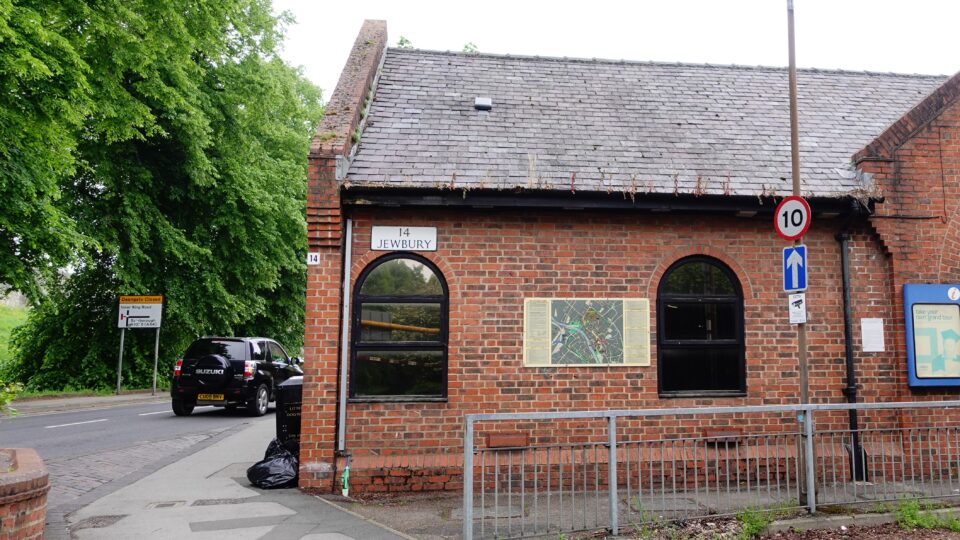
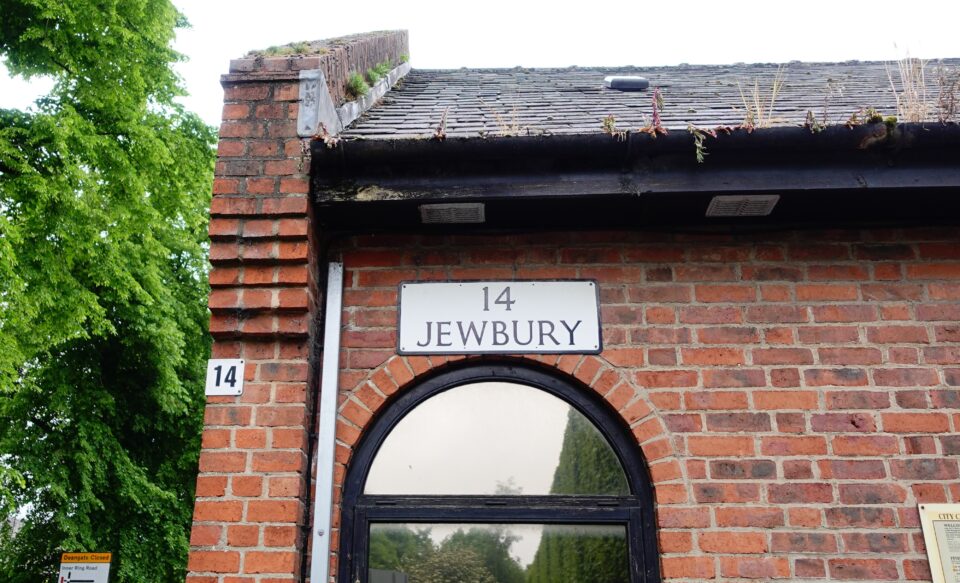
Jews only arrived in England for the first time in about 1070, with William the Conqueror. In 1290, England’s Jews, estimated at some 5,000 – less than 1% of the national population – were expelled by order of King Edward I. During those 220 years in England, a Jewish community was established in York, contributing to the city’s economic growth through trade and finance. It wasn’t until the 17th century, under the rule of Oliver Cromwell, that Jews were allowed to return to England. The modern Jewish community in York began to re-establish itself in the 19th century.
To commemorate York’s Jewish history, a Jewish Heritage Trail was created by IPUP, the Institute for the Public Understanding of the Past, a research center at the University of York. The heritage trail has six sites and for each site there is a YouTube audio explanation of what you are seeing. Nicely done, although we did find the Jewish connection to some of these sites a bit far-fetched.
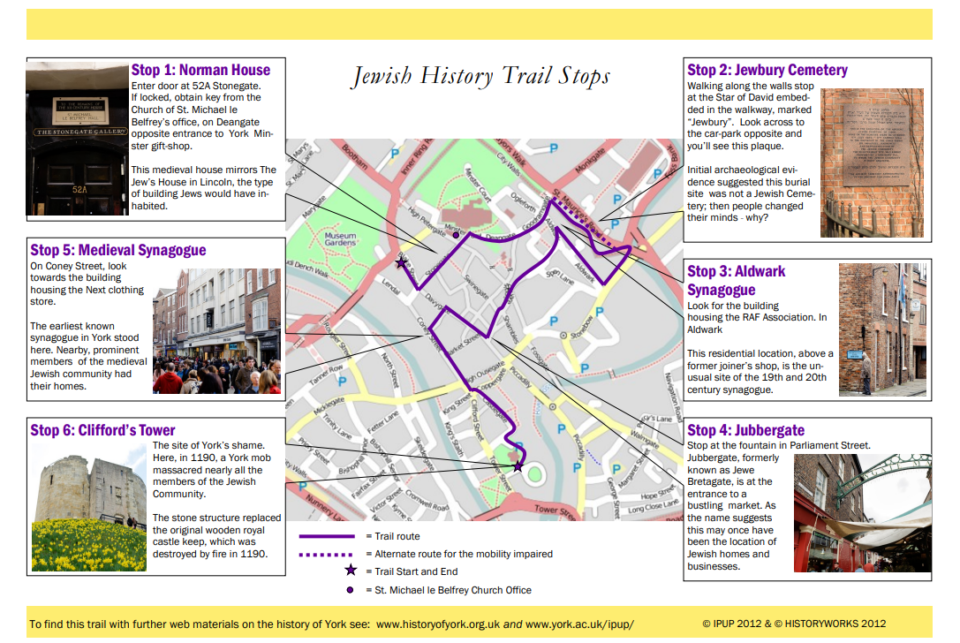
The first site we visited was the building that once housed the Aldwark Synagogue which served the Jewish community in the 19th century. Some sources say it was on the ground floor, others cite the second floor. It was eventually closed, and the exact timeline of its operation is not well-documented. Today the building is a RAF office and has nothing to indicate it was once a synagogue.
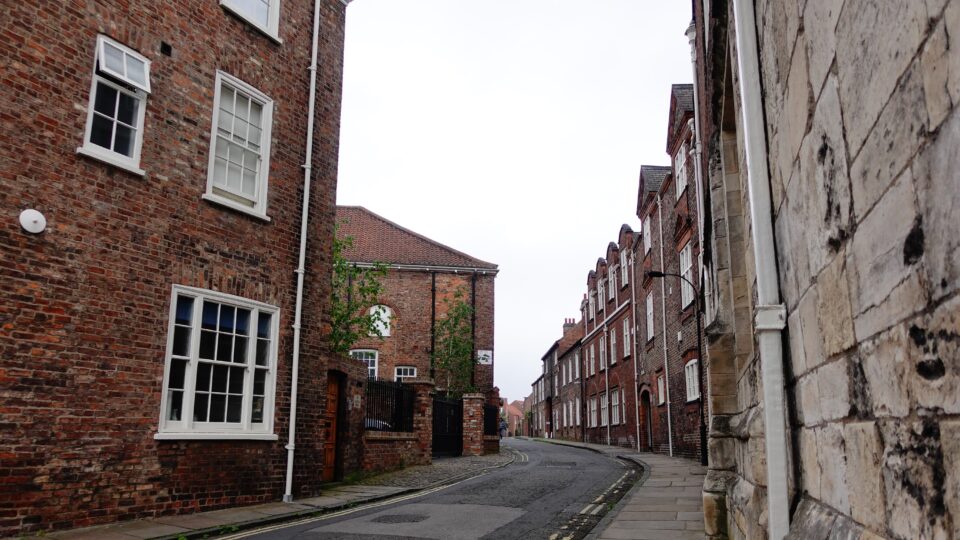
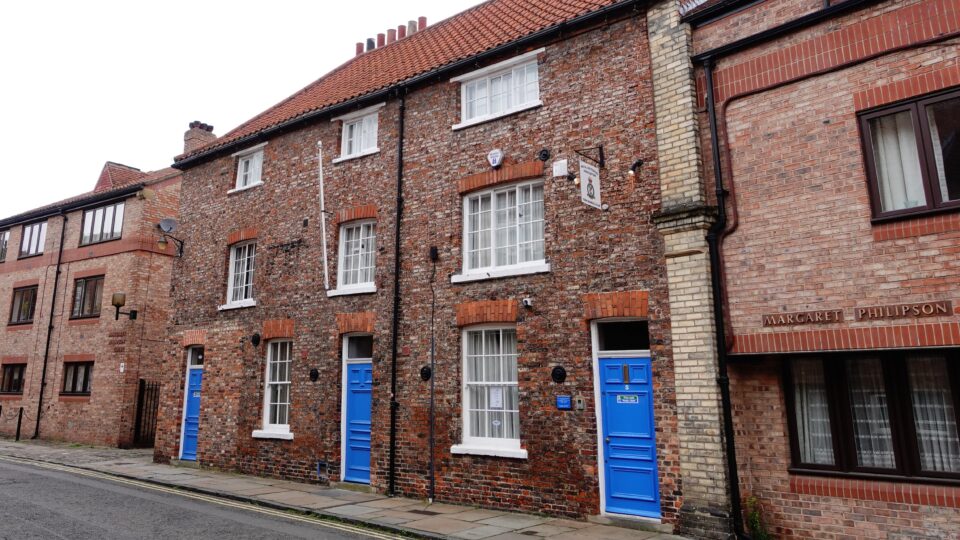
From Aldwark Road, we went to the area inside the walled city. Today many of the streets have been made for pedestrians only, lined with many small shops, bakeries, coffee shops, tea stores, etc. Mark’s favorite was the shoe store that saves your sole.
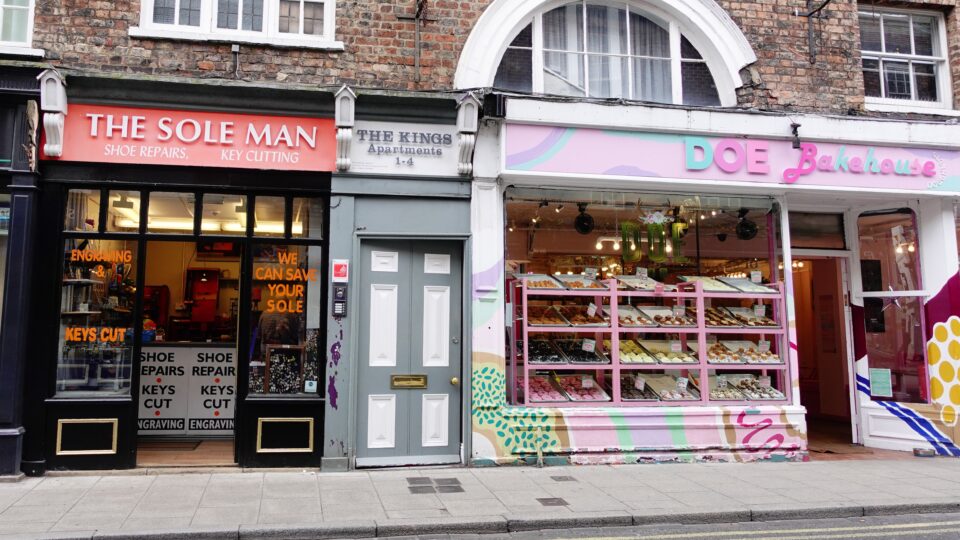
A small lane at the entrance to Shambles Market, a daily market held in the city center, is called Jubbergate. This was our second site on the Jewish Heritage Trail. Archived land deeds show that this lane was originally called Bretgate and in the 1200’s the name was changed to Jubretgate, which eventually became Jubbergate. The addition of Ju to Bretgate could indicate that this was once were Jews lived or worked. No other documents support this theory. We found this a bit of a far-fetched Jewish connection and decided not to include it as a site in our Wandering Jew app.

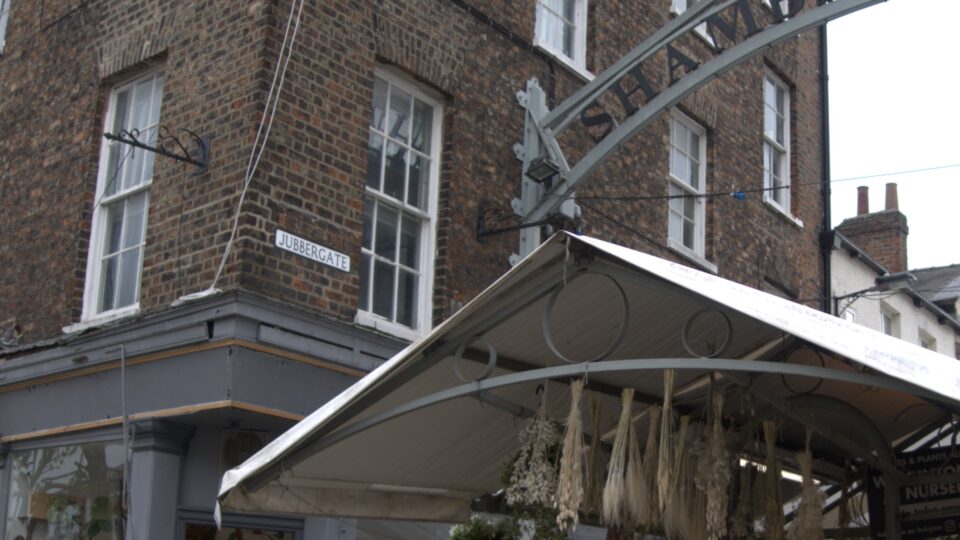
When talking about Jewish history of York, the event most associated with the city is the massacre of the Jews of York in 1190. This took place at what is now Clifford’s Tower. This was our next destination.
Clifford’s Tower sits on a small hill in the middle of the city that was once the location of the royal castle. On March 16, 1190, a mob incited by local nobles who were indebted to Jewish moneylenders, attacked the Jewish community. Jews took refuge in the royal castle. Facing an overwhelming and hostile mob, the besieged Jews, led by Rabbi Yom Tov of Joigny, decided to take their own lives rather than be captured and forcibly converted. Many committed suicide, while others were killed by their fellow Jews in what they saw as an act of mercy. Those who surrendered or survived were promised their lives but were murdered as soon as they left the castle.
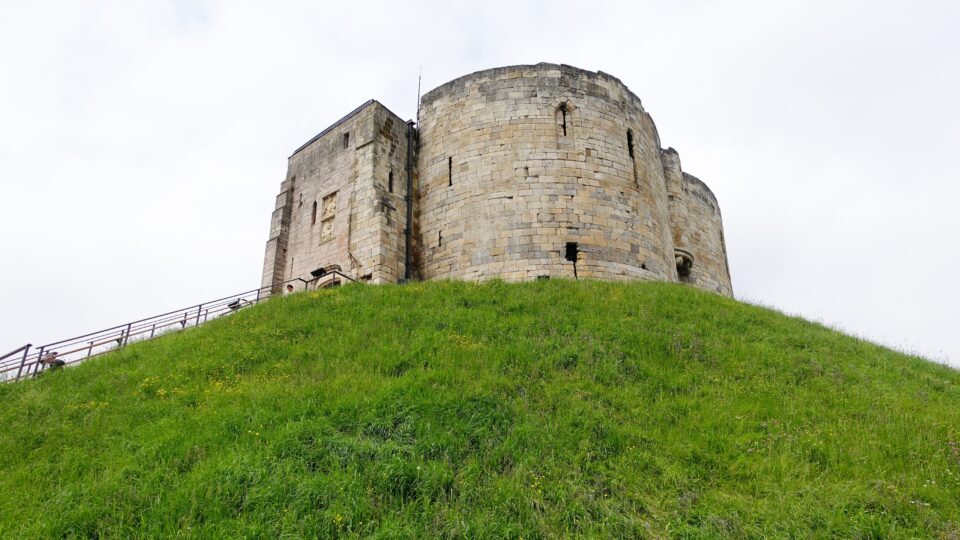
There is a plaque at the bottom of the hill to commemorate what happened here. “On the night of Friday 16th of March 1190 some 150 Jews and Jewesses of York having sought protection in the Royal Castle on this site from a mob incited by Richard Malebisse and others, chose to die at each others hands rather than renounce their faith. ” Would there be any additional mention of the massacre in the museum inside the tower? We went to see.
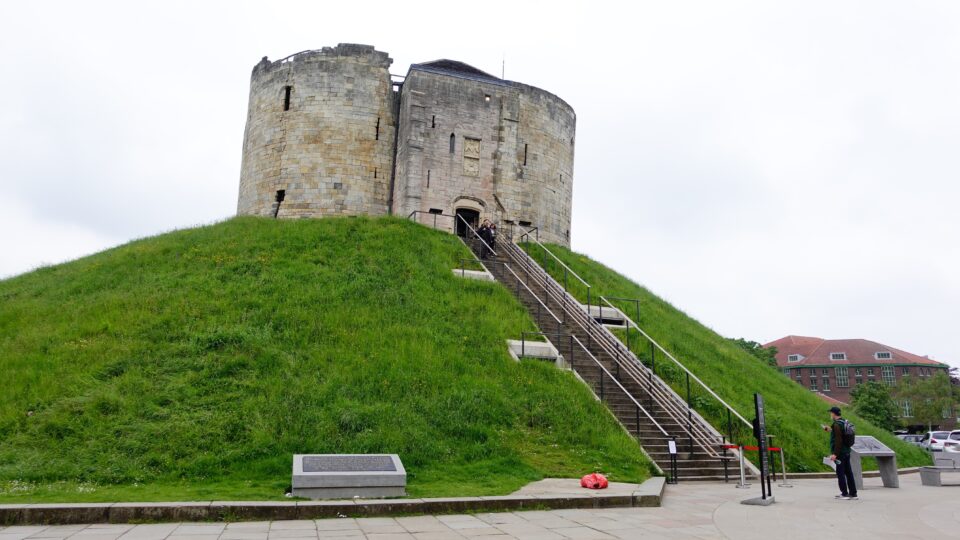

After climbing 55 stairs, you enter the tower and are greeted with a welcome sign that gives a short overall history of the Tower and mentions that the tower was a site of a massacre, but does not say who was massacred. Only when you read a different sign, about the early history of the Tower, can you learn about the “Massacre of York’s Jewish community”.
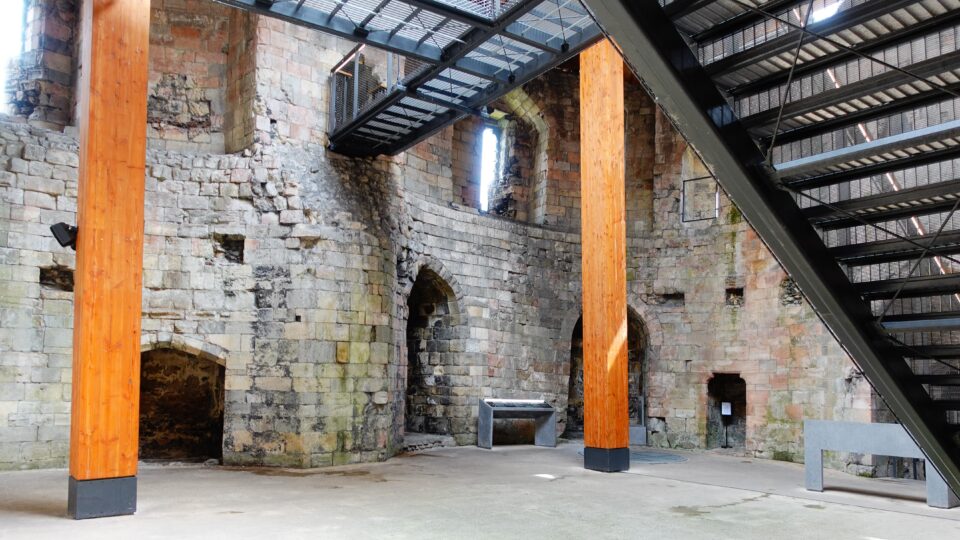
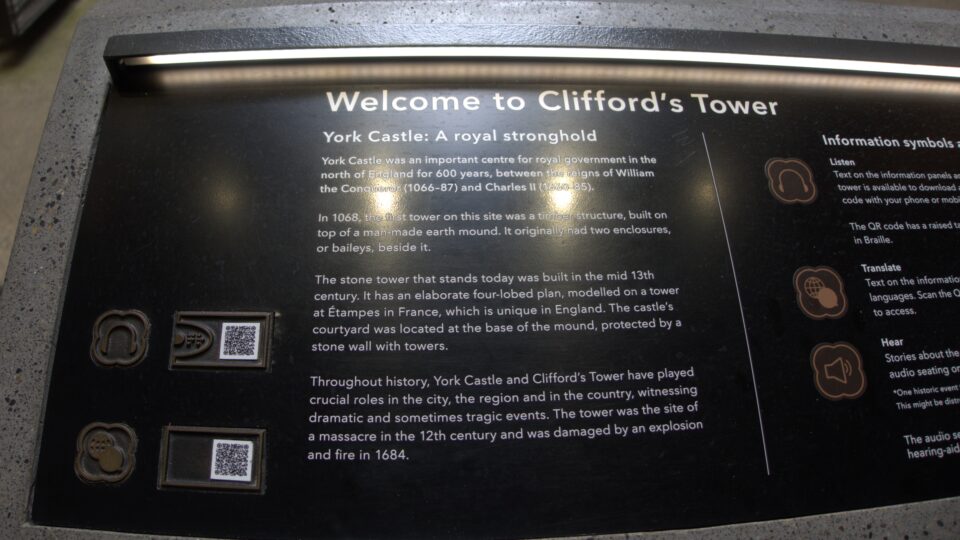

Inside the large empty interior of Clifford’s Tower, there are niches in the wall, were you can sit on a chair with a speaker built in and hear a story about a specific event in the history of the place. One of the chairs tells the story of Elias, a survivor of the massacre who watched his father kill his mother and his siblings, rather than fall into the hands of the mob. It is a powerful tale.

Once back outside there is a history of York timeline displayed on the sidewalk. Both the massacre of the Jews in 1190 and the expulsion of the Jews from England in 1290 are mentioned. An additional commemoration occurs every February, when a carpet of yellow six-pointed daffodils, representing the Star of David, flower around Clifford’s Tower in remembrance.
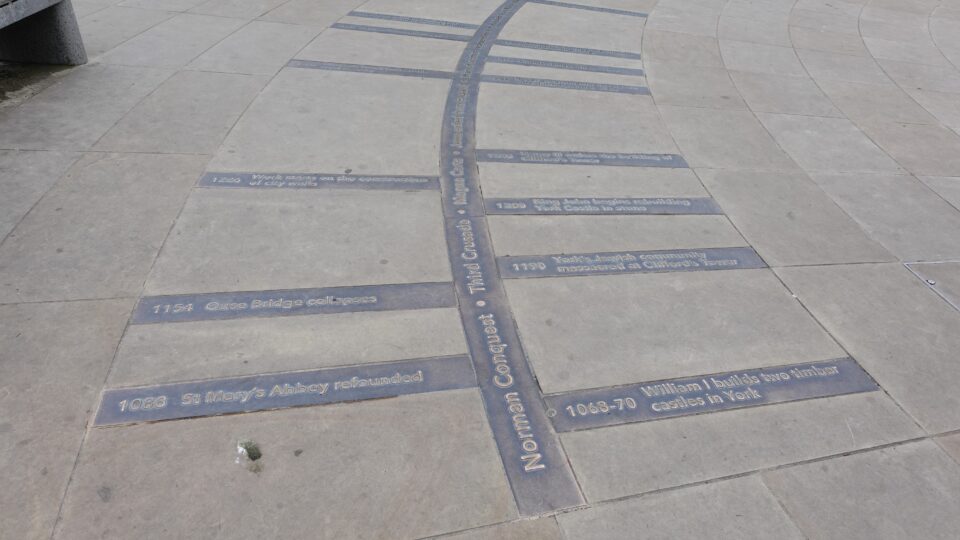
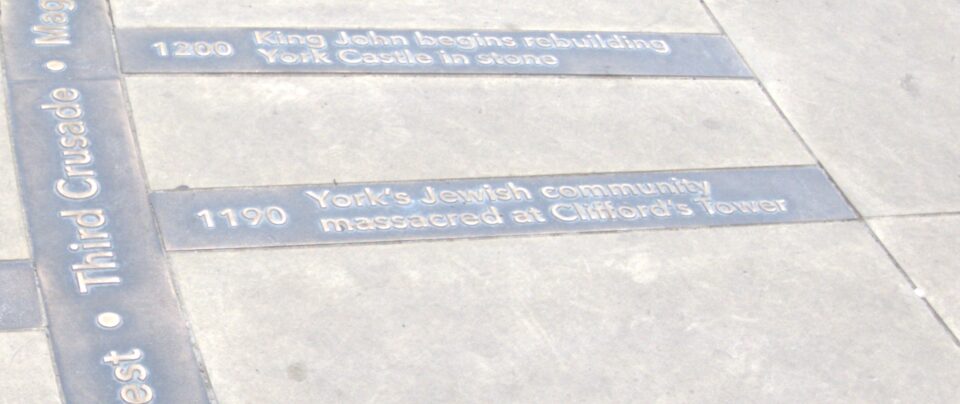
Today there is a small community of Jews in York, The York Liberal Jewish Community. They meet twice a month for Shabbat services and have a meal together. Holiday and special events are held. They do not have their own building and meet in various locations throughout the city.
Our next stop on the heritage trail was supposedly the site of the Medieval Synagogue which today houses a NEXT clothing store. Other researchers say the house was the home of a prominent medieval Jewish family and the synagogue was elsewhere. In any case, there is nothing on the site to commemorate any Jewish connection.
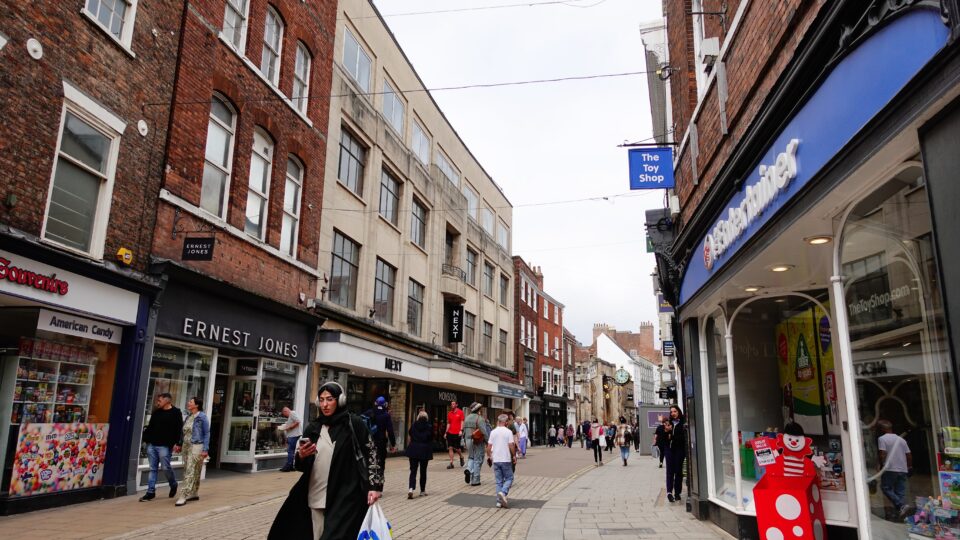
The most far-fetched Jewish connection was our last stop – the Norman House. In the 1100’s most of the houses in the city were made from timber. This house was made from stone, indicating the wealth of its inhabitants. Since at the time there were Jewish families in the area, and some of the Jewish families were wealthy, then perhaps this was once a Jewish home. Far-fetched.
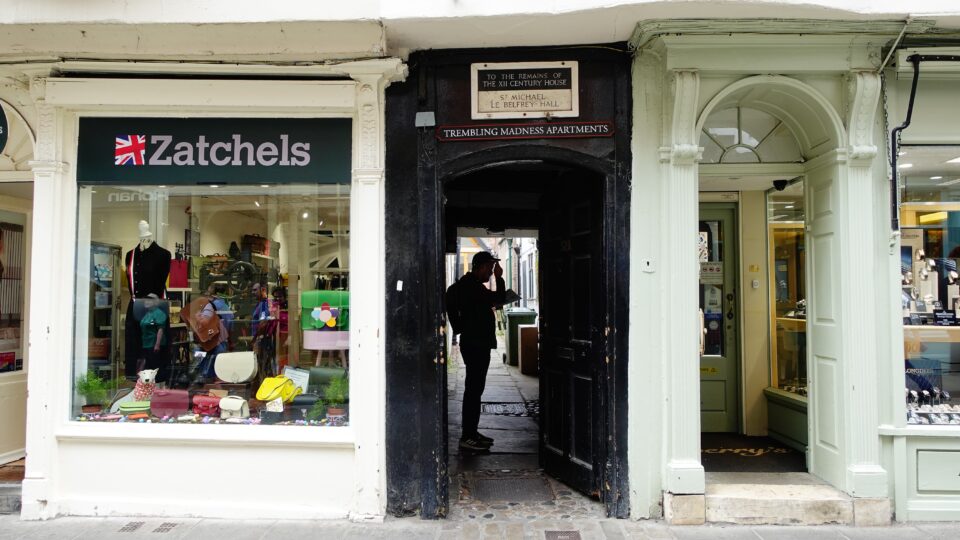


It was now late in the afternoon, and while visiting the sites on the Jewish Heritage Trail, we had not eaten lunch. We went to Döner Summer – the York branch of a chain of vegan restaurants. Their menu was hanging on the window and we thought we had arrived at the wrong place. Everything was either a Burger, Fried Chicken or Kebab – without any mention of it being plant-based. Only after we verified that it was indeed a vegan place, did we sit down to eat. Mark had the Fried Chicken and I had Kebab on a flatbread. It was delicious and different than any vegan food we had had before.

To return to the car park, we walked on the city walls. This gave a different perspective of the old town. You see the backyards of people’s houses and of the hotels. The York cathedral comes into view from different angles.
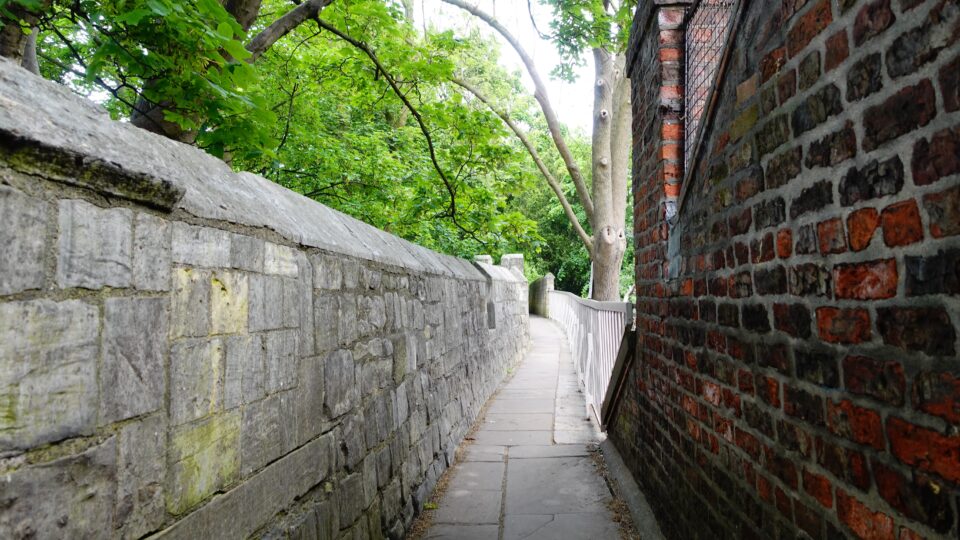
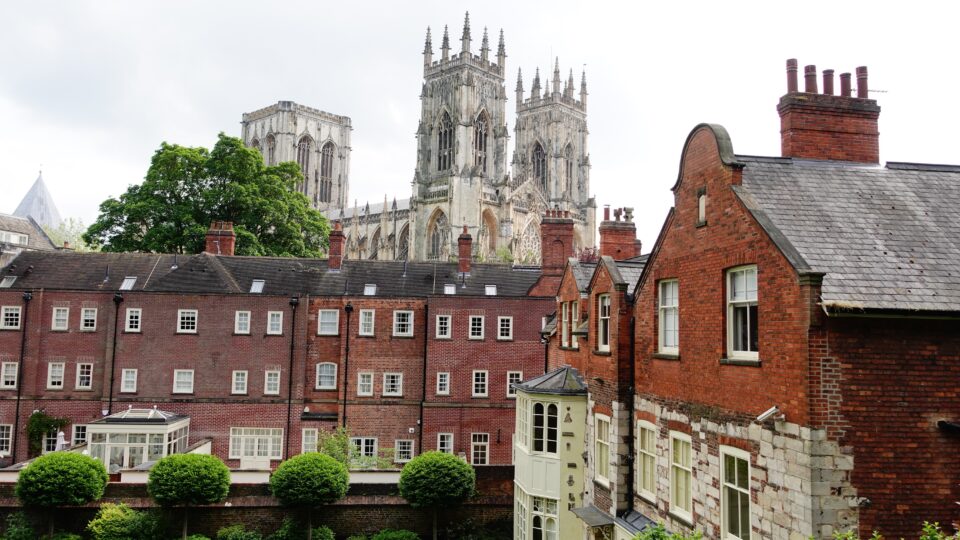
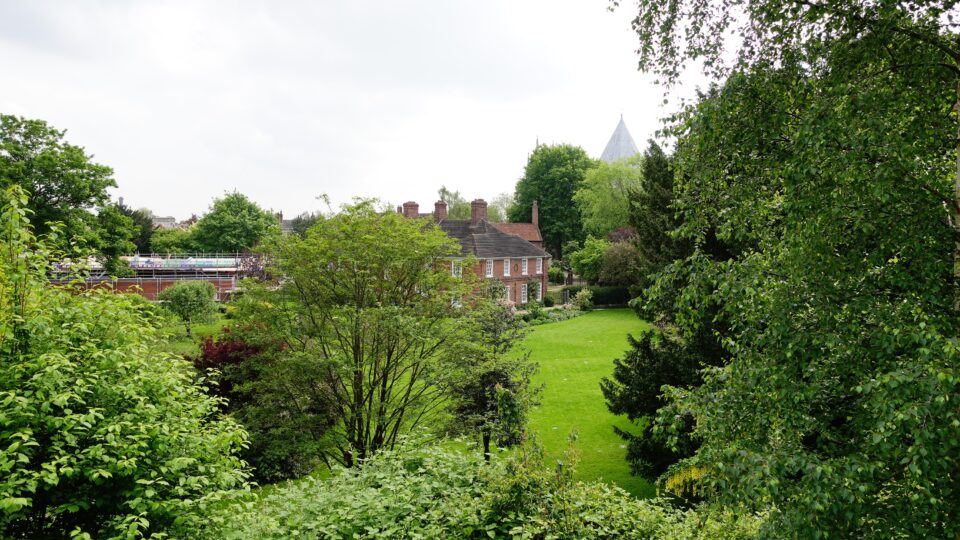
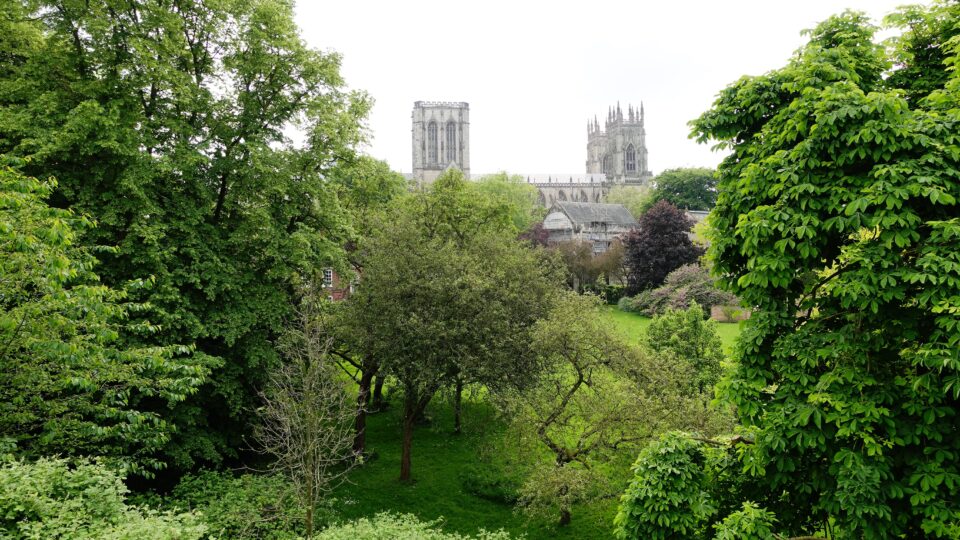
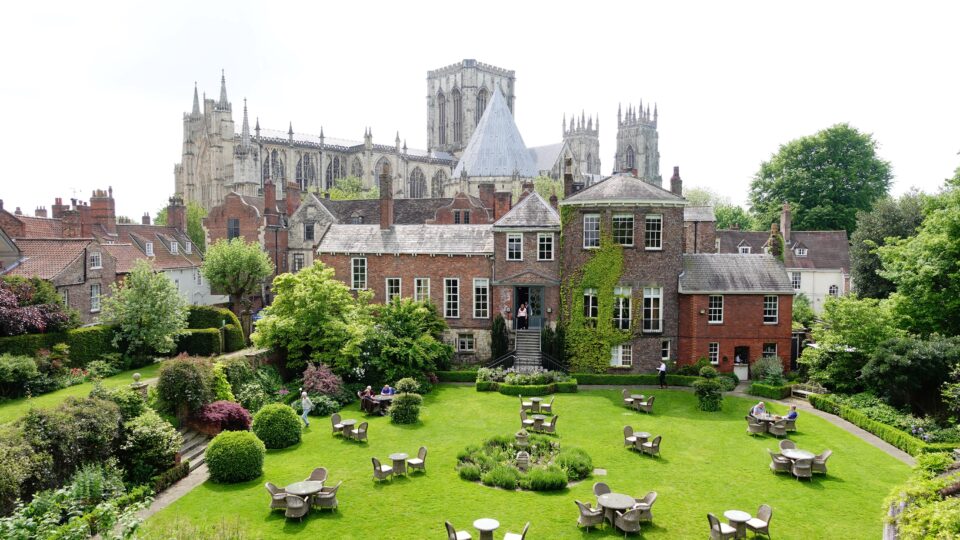
At one point, we saw on the path of the city wall a Jewbury plaque.
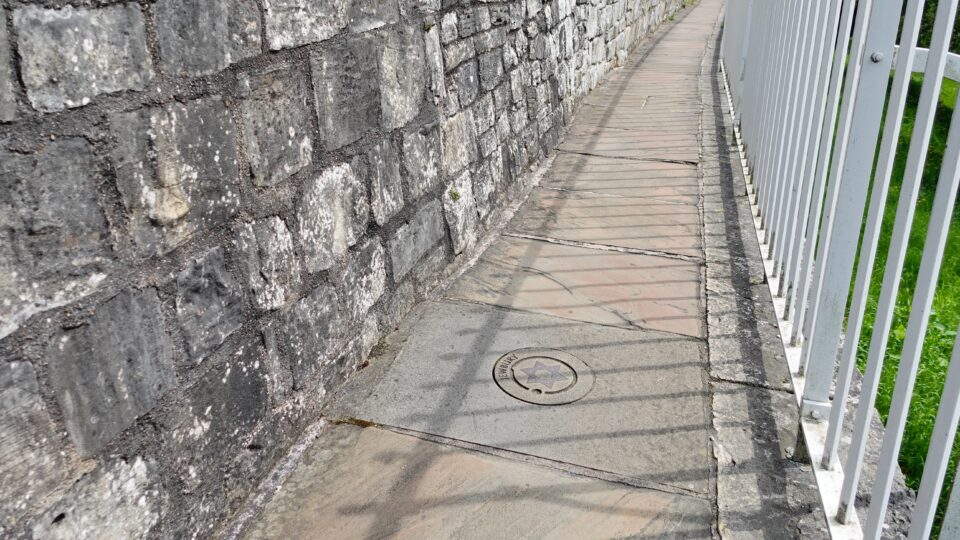
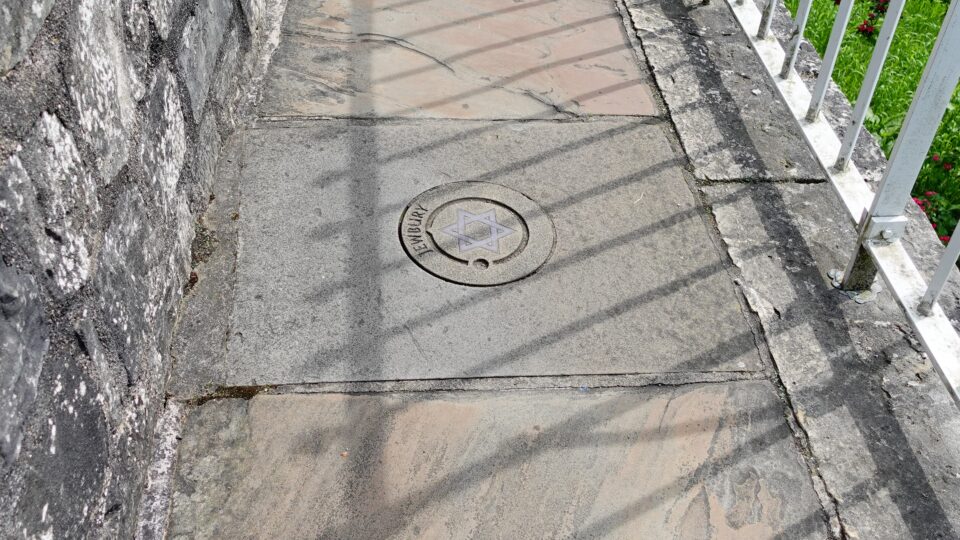
This was exactly opposite the parking garage, where we began our tour. Looking over the wall, we saw on the parking garage a plaque commemorating the Jewish cemetery that once was there. We had walked right by it at the beginning of our day and had not noticed it. “This is the location of the ancient Jewish cemetery of York. Some of the remains were re-interred 8th July 1984 in the presence of the Chief Rabbi Sir Immanuel Jakobovets and representatives of the Jewish community. The re-interment site was kindly provided by J. Sainsbury PLC to whom the Jewish community is most grateful. The ancient cemetery approximated to the present car park area“
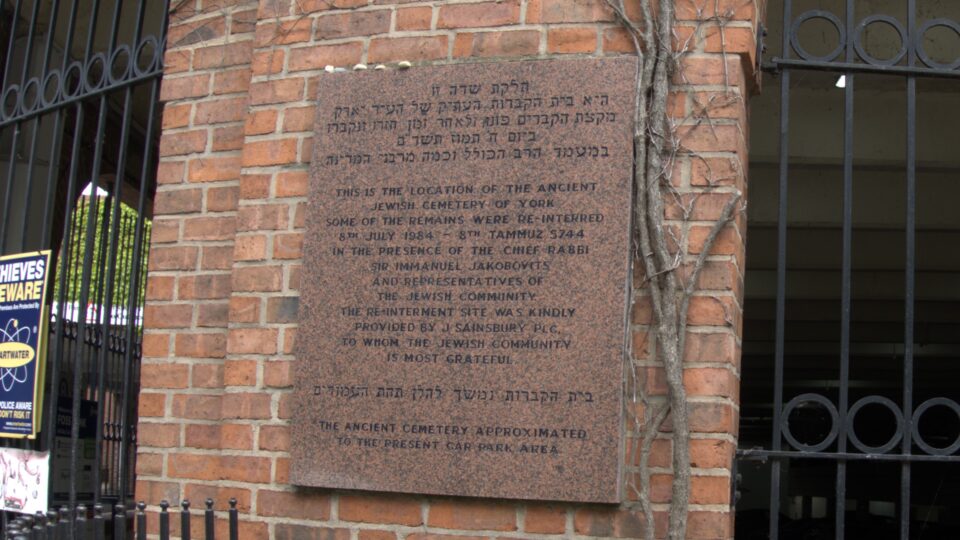
Back at the car park, we got our car and drove to Leeds, where we would spend Shabbat. First we dropped of our suitcases at our AirBnb and then went to the nearby Chabad, who had a package of three challahs and kiddush wine waiting for us. From there, we drove to the local Sainsbury’s grocery store and filled up with supplies for our 2-month trip. Our show of appreciation to Sainsbury.
Shabbat in Leeds started close to 9:00 PM, and because of the late hour, most of the synagogues do not have services Friday night. We made Shabbat early, had our dinner, and went to sleep. End of a long day.
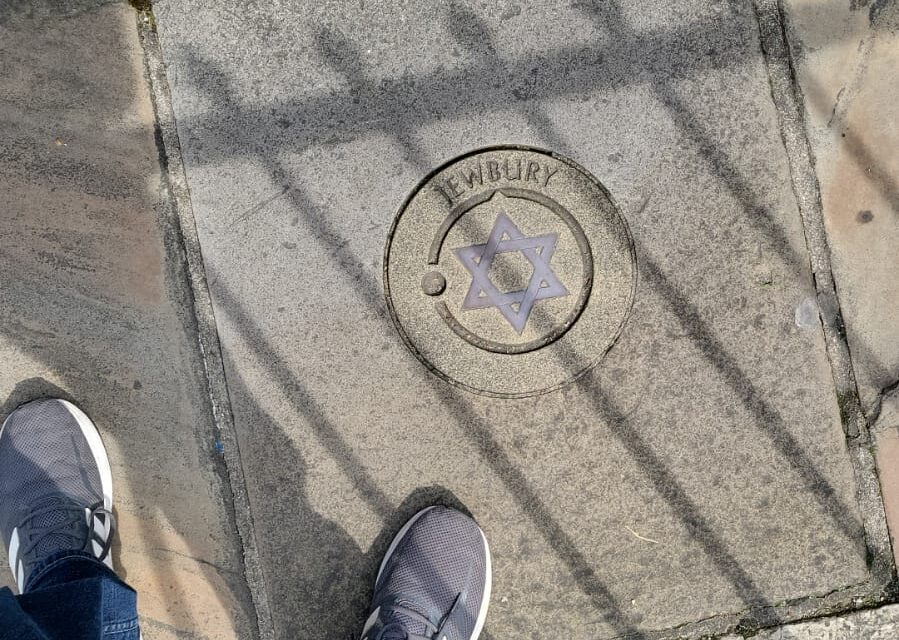
York was one of the first places I visited when I lived in England in 1979 and I remember walking on the walls and the beautiful York minster (cathedral). And continuing the far-fetched theme, lord jacobovitz is the brother of adina’s grandfather
This one made me cry 🙁 שבכל דוד ודור עומדים עלינו לכלותנו
The vegan menu cheered me up a bit